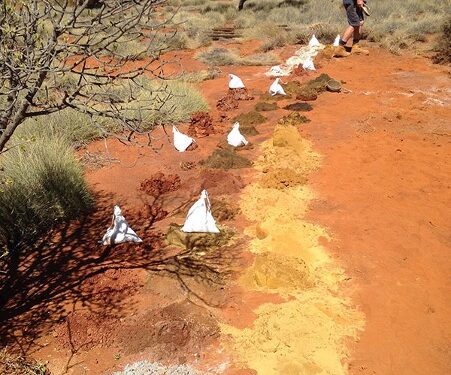Lefroy Exploration Limited’s (ASX: LEX) latest assay results from the Burns Central Resource drill programme in Western Australia have returned multiple, thick intervals of gold, copper, and silver alkalic-porphyry-style mineralization over 240m strike north of the Burns Baseline discovery section.
These are the final assay results for the 67-hole RC resource drill programme completed at Burns Central in the December 2022 Quarter. Burns is within the company’s wholly owned Eastern Lefroy Gold Project located 70km southeast of Kalgoorlie.
The data from this 67-hole programme, in combination with previous drilling data, will support a Mineral Resource Estimate (MRE) for Burns Central. The MRE is now scheduled to be finalised in early April 2023 due to a delay in receiving final assay results.
“These recent results confirm that the Burns Corridor hosts a broad, alkalic-porphyry-style mineral system with increasing scale,” Managing Director, Wade Johnson, said.
“Alkalic porphyry systems have the potential to form large ore deposits where numerous porphyry systems with smaller strike extents add up to mineral systems with significant total copper-gold endowment. The discovery at Burns Central has only just ‘scratched the surface’, outlining a 480m-long area that remains open and is only one of multiple magnetic anomalies, such as ‘Lovejoy’, along the 2.5km trend. Initial drill testing has shown that these anomalies have all the right characteristics to host multiple Burns Central-type deposits.”
The company is currently planning further drilling to explore these anomalies after the delivery of the Mineral Resource Estimate (MRE) at Burns Central.
Multiple, shallow, thick intervals of gold and copper mineralization have been intersected. These results significantly strengthen and expand the mineralized footprint of Burns Central and, taken together with the previous results, outline a large zone of gold, copper and silver mineralization, with a strike of at least 480m and vertical depth of approximately 200m from surface, which remains open.
Mineralization in the RC holes north of the baseline section follows two distinct trends:
• A higher-grade gold trend predominantly hosted by diorite porphyry within the ‘Central Porphyry’ domain, is associated with an interpreted north-south structure. This gold trend is open at depth and to the north beneath Lake Randall, where it has only been partially tested by shallow aircore drilling
• A north-west trend of gold and copper is hosted largely in basalt surrounding the porphyry intrusions, with its limits yet to be defined
Importantly, the mineralized northwest trend of gold and copper is interpreted to coincide with a number of magnetic anomalies over a 2.5km strike length, which the company refers to as the ‘Burns Corridor’.
The company considers these magnetic anomalies to be part of a larger scale group of alkalic-porphyry-style systems, centred around the Burns intrusive complex. Alkalic porphyry gold-copper systems have the potential to form large tonnage mineral deposits where multiple porphyry systems occur proximal to each other, such as Cadia Valley in New South Wales and in British Columbia, Canada.
Exploration by the company to date has been focused at Burns Central, where mineralization remains open along strike and at depth. The ‘Smithers’ magnetic anomaly occurs immediately north of Burns Central and has only been effectively tested by a single RC drill hole (LEFR294) from a drill programme in 2021. This hole intersected broad gold, copper, and silver mineralization, including 62m @0.22g/t Au, 0.13% Cu, and 0.16g/t Ag from 84m in LEFR294. This anomaly is a high priority target to expand mineralization immediately beyond Burns Central.
In addition, the company will focus drilling at the other magnetic anomalies within the Burns Corridor, where initial broad-spaced drill testing has provided confidence that the Burns Project will evolve into a large mineral system.
This includes ‘Lovejoy,’ located 1.5km north of Burns, where multiple, thick, downhole intervals of gold and copper were intersected in 2022 and include a combined 96m of Cu-Au mineralization in hole LEFD009 comprising 11m @0.68% Cu and 0.40g/t Au from 50m, 40m @0.20% Cu from 208m and 45m @0.33% Cu and 0.30g/t Au from 258m.
For further information please visit: https://www.lefroyex.com/












